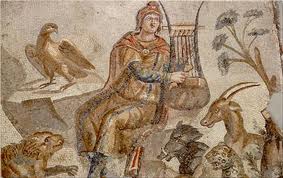Patricia Hatch Reveals Super Finds at FAB Fall Lecture
by Marcia Matthews
An enthusiastic audience was rewarded with "super finds" at the Friends of Adin Ballou Fall Lecture.
Patricia Hatch, researcher par excellence, an award-winning writer, Master of Divinity, and
itinerant Unitarian Universalist preacher, spoke on "Women in the Early Hopedale Community."
Ms. Hatch is interning at the Unitarian Church of Marlborough and Hudson, where Adin Ballou's son-in-law
William Heywood was a past minister. In November the congregation celebrated the 150th anniversary of its building,
which was built by abolitionists.
In her lively and entertaining presentation, Patricia challenged the crowd to identify 19 of the unsung founders.
Hopedale webmaster Dan Malloy won a prize for the most correct answers, including psychic Cora Scott,
painter Elizabeth Humphrey, mail carrier Susan Thwing, and escaped slave Rosetta Hall.
"The Unitarian Universalist message is love and peace," said Patricia. She demonstrated,
with snippets of 19 lives, just how advanced was the Early Hopedale intentional community.
"It was a true community that struggled with many issues but maintained their ideals."
Wrote historian Edward Spann, "With the exception of the Shakers, Hopedale came as close to equality between the sexes
as any place in America."
Women could vote and fulfill their potential according to their abilities. Many women served in community offices
and elected positions. Equal wages, one uniform rate of wages at 50 cents for eight hours, were codified in the
charter of Fraternal Community Number One. Although the patriarchal interpretation of divine law declared
"the division of labor ordained by the all-wise Creator," nursing mothers were credited with a 48-hour work week.
Many women belonged to the Hopedale Sewing Circle and Tract Society, which freely distributed leaflets such as
"Away with War."
Religious leadership was open to women. Although they were not ordained, laymen and women did lead services.
Abbie Ballou Heywood, Adin Ballou's daughter, worked as co-principal of the Hopedale Home School.
Former student Ellen M. Patrick praised her among "helpers of the spirit" who left a permanent impression:
"our dear Miss Abbie."
Divorce was not allowed except for proven adultery. An exception was made for Sarah Baker Holbrook, whose husband,
William Rich, was ensnared by the inebriating pull of alcohol. Women had the option of keeping their own name,
as Harriet Greene did, and Mrs. Rich took back her maiden name. The fashion statement of bloomers caused a riot
at the Worcester convention in 1850, when police had to be called at the sight of 25 female Hopedalians wearing the costume.
Patricia, who grew up in Willington, Connecticut, focused on fellow Connecticut native Abby Hills Price
(from Willimantic). Price enjoyed opportunities in Hopedale that would have been denied to her in the outside world.
A preacher, writer, poet and gardener who advocated equal work, pay, and wearing of bloomers, she spoke at the
First National Woman's Rights Convention in Worcester in 1850.
In one anti-slavery poem she urged her readers to "Make their case your own."
Abby Hills Price was the Community's poet laureate until, in a scandal worthy of "Desperate Housewives,"
Brother Henry Fish had an affair with Sister Daphne Seaver. Both Henry and his wife Margaret confided in Abby Price.
Said Abby, "I sometimes felt they were all to blame ... I was charged with knowing too much to keep dark."
Abby called upon the Council to prove that their charges were correct. Within the month, she and her family withdrew
from the Hopedale Community and went to another intentional community, the Raritan Bay Union, in New Jersey.
That same month, the Hopedale Community passed new resolutions denouncing Free Love.
In her research, Patricia found scribbled in the margin of the record book for July 26, 1853,
"Mr. Ballou said he never said women were as tyrannical as men..." but notes imply he did basically say just that.
When later, Abby Price went to live in Brooklyn, she became good friends with Walt Whitman and influenced him
toward women's rights. She started a new business making ruffles and wrote Whitman requesting that he advocate
in Washington against her being taxed twice.
During the lecture a red cloth lay across a front table. At the end, Patricia whipped off the cloth to reveal
some surprise super finds of her research: rare photos of Abbie Ballou Heywood and her husband William.
Abbie looks like her father, only with wire-rimmed spectacles and long hair done up. Other rare photos give a face to
Abby Hills Price, Cora Scott, and others.
As Sherry Ceniza said, Hopedale was "a world different from mainstream American society, a world in which women
had voice." The experience of being steeped in the unique history of our community and having its people brought to life
was welcomed by the devoted crowd.

How many of these Hopedale women can you identify?
Click here
to check your answers!
| 



